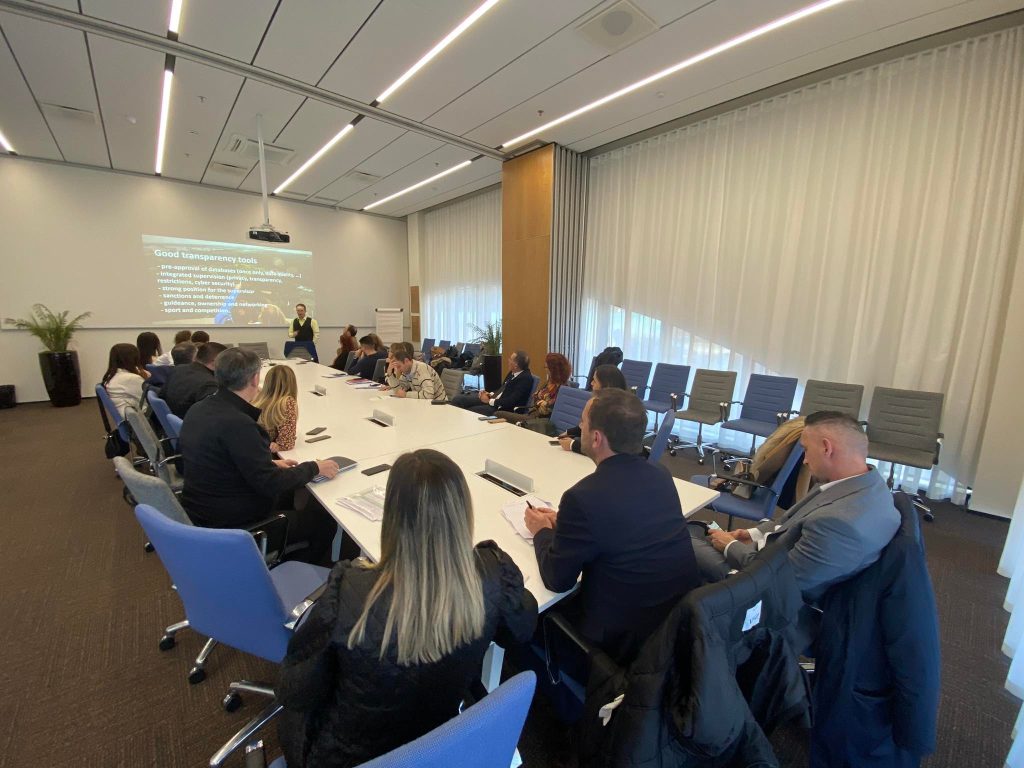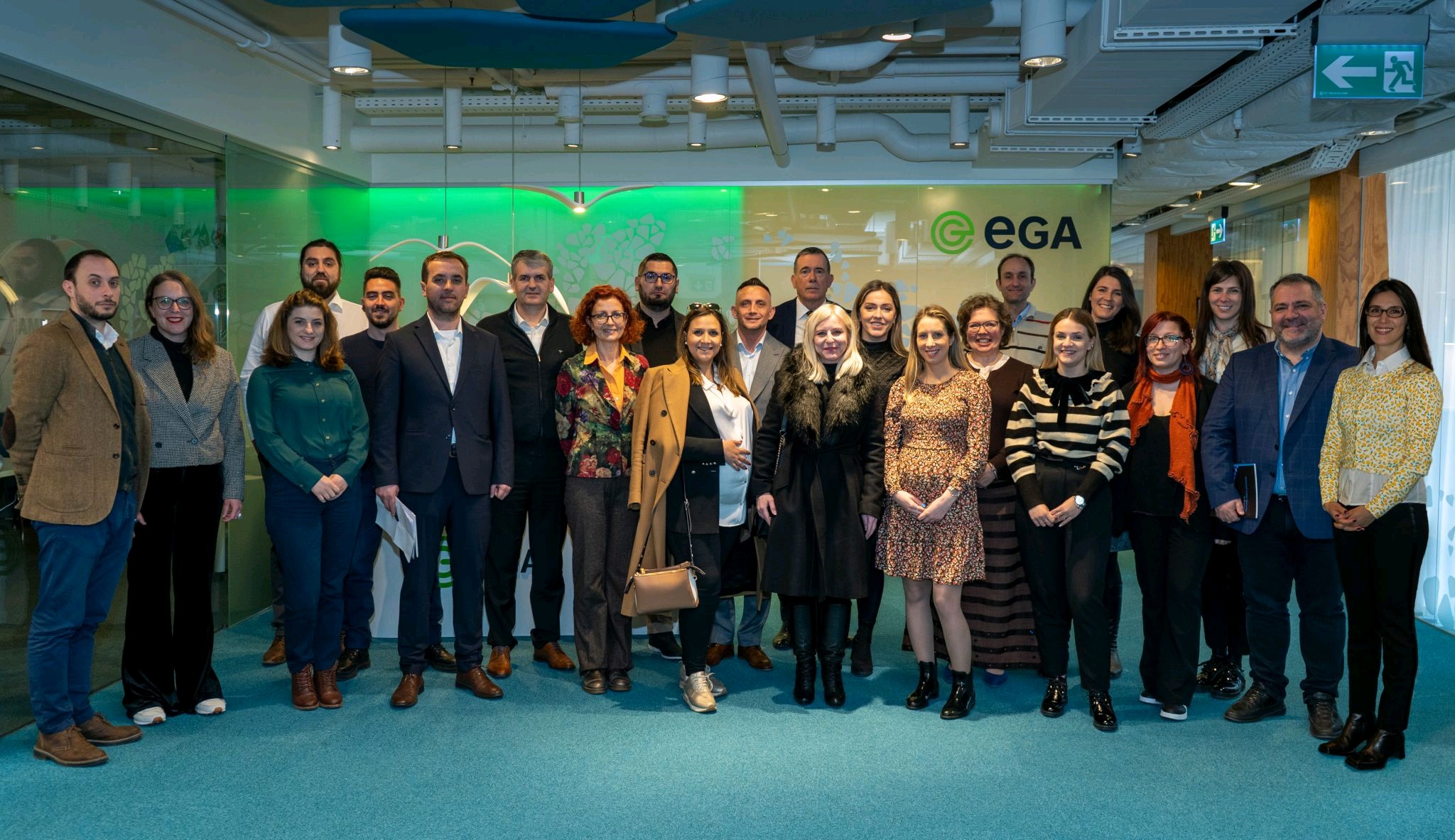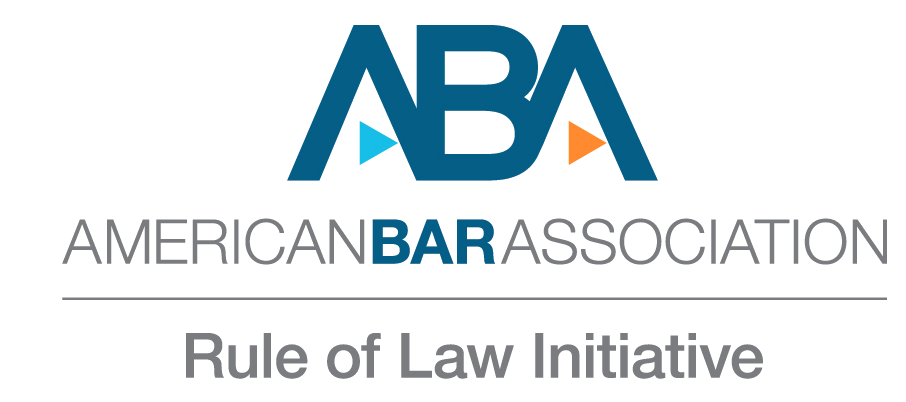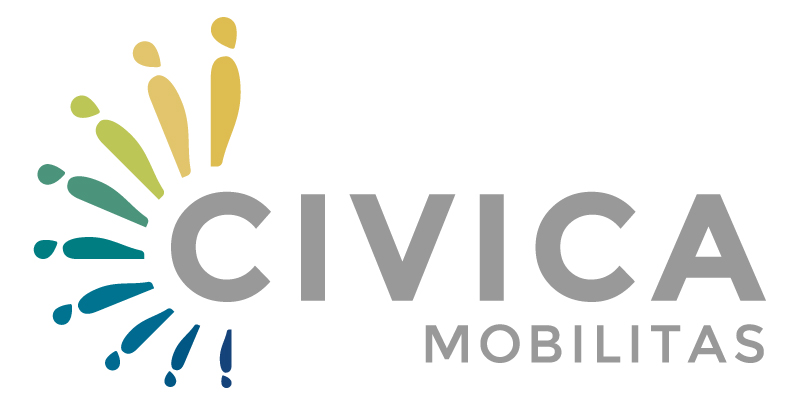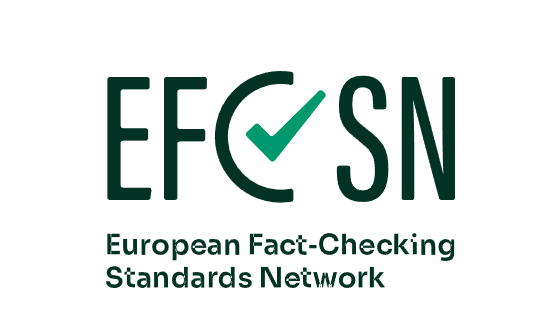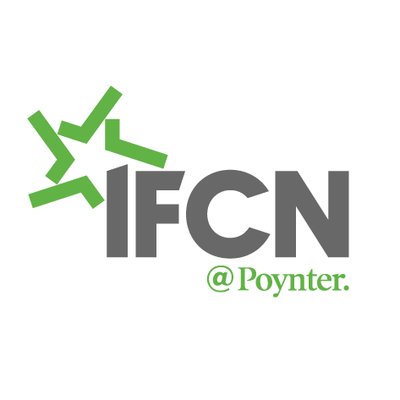Lessons learned from Estonia: from a poor post-communist country to a digital paradise
Estonia is a country that proves that digitalization improves the quality of life of its citizens. Thousands of services, mostly administrative, are performed by Estonians with a few clicks from home, and waiting in line at the counters is part of distant history, writes Portalb.mk.
This Baltic country of 1.3 million people has replaced its post-Soviet identity with that of technological innovation and digital democracy in the last 25 years. In addition to the many benefits, digitalization saves the country 2% of Gross Domestic Product (GDP) in costs and wages, which is proportional to the amount of money Estonia has to spend on the defence sector to meet NATO criteria.
Estonians proudly point out these data and say with a laugh that thanks to the innovation, now “the security of the country is free”. In addition to money, the people of this country save time and nerves through e-governance.

To take a closer look at how the system works, in which a nation is digitally connected so smartly and efficiently, the Metamorphosis Foundation through the project “Increasing Civic Engagement in the Digital Agenda – ICEDA” co-funded by the European Union, in collaboration with e-Governance Academy (eGA) has organized a study visit to the Estonian capital, Tallinn.
There were 23 representatives from government institutions and civil society from Albania, North Macedonia, Serbia, Kosovo, and Montenegro, who are involved in the promotion and implementation of the Digital Agenda in their respective countries. During the visit, they met with representatives of eGA, the Estonian government, local government representatives and other Estonian organizations.
“The aim of the ICEDA project is to encourage citizens to competently engage in the digital transformation of societies in the Western Balkans. Everyone, starting from the citizens to decision-makers and policymakers, needs to understand and feel the benefits of this process. When designing the project, it was clear that Estonia was the most appropriate destination to see and experience these benefits, firstly because most countries in the Balkans are similar in size to Estonia but also because we share a similar political past because we are countries born of similar political systems (socialism/communism) and thus we have inherited the same challenges that follow the countries that are transitioning from a closed society to a democratic and open society. But unlike the countries of the Western Balkans, Estonia today is a world leader in digital transformation, while the countries of the Western Balkans are far behind in this process. But what is even more important is that Estonia is making the digital transformation using an approach that puts citizens and their needs at the center of this process, and that is especially important for us NGOs. We wanted our study visit to inspire, but also to show that such success is possible and there is no excuse for our failure in the size of our countries, population or political past. We wanted to show that with a clear vision, purposeful co-operation between all sectors of society, commitment and work, we can succeed and that Estonia is not only a great example to follow, but also a partner and supporter for the whole region”, said the director of the Metamorphosis Foundation, Bardhyl Jashari.
The basis for building the most digital society in the world
1.Democratic transformation
From an early age, former MP, former minister and e-democracy expert Liia Hanni has contributed to Estonia’s democratic transformation. She showed how this country was liberated from Soviet occupation through the “Singing Revolution”. Namely, in mass protests and demonstrations against the Russian regime, the revolted people sang and organized festivals with patriotic motives.
Following these developments, in 1991 Estonia again declared independence and began the process of building democratic institutions in the country. Hanni says that in order to achieve this level of democracy that the country has today, especially in e-democracy, there are several essential factors.

“Radical reforms were needed in the early 1990s. One was the focus of the rule of law. We have built strong institutions to have a sustainable democracy. Subsequently, we established widespread use of information technology in the public sector and in society. An additional factor was our membership in the European Union and NATO.” she said in an interview with Portalb.mk.
According to her, in addition to strong institutions, they also need to be transparent in their work.
“We also need to understand that power is in the people, if they demand transparency from decision-makers, then they will not suffer from their wrong decisions,” Hanni said.

Striving for accountability, transparency and activism are generally part of the work of CSOs, so they should be supported.
“Involvement of local activists and civil society organizations in the decision-making process in the country and their support is the basis of democracy. It encourages and stimulates people to take an interest and be more active in changing their situation,” added Liia Hanni, who is now hired as an eGA expert.
2. Building trust between institutions and the population
The transparency of the institutions leads to building trust between them and the citizens, and the word mutual trust was mentioned in every session of the Estonian representatives. In short, the fact that Estonians trust institutions with their data and institutions prove it by doing things quickly and safely through digital channels is one of the cornerstones of the success of Estonian e-society.
“Apart from the traditional mechanisms for maintaining transparent institutions, such as control by the Parliament, rule of law, freedom of the media, submission of financial reports by companies and regular reporting of property by officials, we have created other additional mechanisms. These include the adoption of the Law on Transparency, the requests for free access to information to be answered within a period not exceeding three weeks, each institution to have a digital register of documents with detailed data, etc.”, explained Viljar Peep, Deputy Secretary-General of the Ministry of Justice, citing as an example the website of the Official Gazette of Estonia, which contains very detailed information on all the laws of the country, linking them (inter alia) to court decisions based on those laws.

The term “trust by design” refers to the introduction of security and privacy protection at every step of technological development. It also refers to the transparency with which digital services are created in the country, using open-source software, with open coding which is available to all.
Additionally, Estonians can check online at any time when from which institution and for what all their data is used.
“If you show the citizens the process, how a service is created and how the implementation takes place, it obviously increases their trust in the system. When we have problems, we talk transparently about what is happening because we are looking for solutions to the problem. We discover the problem and talk to everyone about what needs to be done. We are not saying we know everything or hide any flaws of a different nature,” said Heiko Vainsalu, eGA Programme Manager of Technology.

3.Leaders with a vision and services with a focus on the citizen
Of course, those who led the country and are currently in charge of decision-making were not digitalization experts, but were and still are united in fulfilling the Digital Agenda, which remains a top state priority.
No matter who is in power at the central or local level, the commitment and readiness of the country to move forward with technological innovation remain the same.
Political parties do not have the habit of blocking good ideas if they come from opposition parties. Officials in institutions do not change every time the country’s leading political establishment changes. Estonia’s priority is to keep the experts in the administration in their jobs, even if they do not belong to the ruling party at some point, and this is undoubtedly one of the recipes for the great success that this country has achieved.
“The country’s leaders share a common vision for digital transformation. Decision-makers know that they are expected to understand what is needed and what that means and what is meant by the digitization of services, to give the green light for experimentation and to have the patience to allow big changes to happen,” said expert Arvo Ott eGA board member.

The online services that are created focus on the needs of the citizens because the services, above all, are made to serve the citizens and only to improve their lives.
The Mayor of Tartu, Jarno Laur, in the presentation of the local digital services in this city, pointed out that in order to make decisions on which everyone in the municipality will agree, he uses several online communication channels.
“We do have the official gazette that we send to every home, but in the first place, there are several channels on the municipal website where citizens propose ideas, vote and discuss it until a decision is made on the best idea. Then, all the project documentation that will be realized, what it will look like, how much it will cost and how the whole process will go until the end, is all available online and is available to everyone,” he said.

Through the municipal websites, the citizens of the state, among other things, have the opportunity to see all the information about their city, land, buildings, the list of schools and kindergartens and their activities, and even the places where trees will be planted.
How does the system work?
Estonia’s e-Government relies on several pillars: legislation, the capacity of the technology and administrative sector to implement laws and decisions, the use and trust that citizens have in these digital solutions, free internet access to all, the exchange of data between institutions through the X-Road mechanism which also guarantees secure transfer, and the digital ID card which allows residents to put their digital signature. In Estonia, they attach great importance to improving the digital skills of their inhabitants from an early age.
Digital identity
By collecting data of citizens through the once-only principle which in practice means that the citizen only once registers all data in the system and they will be used for every service in the future, the state creates the digital identity of citizens. From the moment of birth, a unique number is created for each inhabitant. Digital ID cards are made of plastic, and have a chip and biometric prints of the cardholder. They are mandatory for every resident in the country. The digital identity of Estonians is available both on the phone and in a “smart” version. They create a digital signature that allows you to use thousands of online services ranging from banking services, school and university registration, tax filing, voting, medical care and more.
“Once I put my ID card on my laptop and the login process is complete, I can apply to renew my driver’s license,” explained Annela Kiirats, Programme Director of e-Governance Trainings at eGA.

he then opened the portal where all her data are in one place: address and data when and where she was born, phone number, address, e-mail, data on her real estate, property list, data on her employment, places where she worked, the kindergarten she stayed in, where she finished elementary, high school, college and master’s degree. Moreover, in this portal are the data about paying taxes, parking cards and public transport, her medical data and prescriptions from the doctor, data about her family, children, and even about the animals she keeps.
“Here is the data for my vehicles, for possible traffic violations, as well as for car insurance. I will now apply for a license extension. We receive an email reminder when the deadline for any kind of document expires,” she said, completing her application with three clicks, from the office and without the need to go to the counter even once.
X-Road
All the above data about one person, for security reasons, are not stored on the portal. However, the data is connected through the government platform X-Road, through secure encrypted channels (end-to-end encryption). Simply put, your data is in your doctor’ system, as well as your bank and high school data, and when a person logs in to the portal to get this information, they collect it from the sources where they are located and create complete information. For illustration, the information travels like a ship passing through a canal using keys to open the canal doors. In this case, it is a digital path with digital keys. The process of collecting and cross-referencing such data, i.e. by many institutions and entities is called interoperability.
X-Road has a very rigorous filter, no institution can access data it does not have the right to have. The teachers in the school have access to the student’s grades, but not to their health cards. And whenever an institution uses a person’s data, the same person can see it in real-time and know why it was used.
“We are very strict about the security of citizens’ data. When planning the previous budget and in our development strategy for the coming years, we are always careful to allocate sufficient resources for data protection,” said Luukas Christian Ilves, Government Chief Information Officer and Deputy Secretary-General for Digital Development at the Ministry of Economy.
X-Road, in addition to connecting the data of all state institutions in the country, also connects the information of private businesses. It even links data from other countries, in this case, an Estonian going to Finland, where they can get digital prescription drugs from their doctor in Estonia.
In two decades, electronic services have used about 1.4 billion digital signatures that have the same value as paper signatures, while about 1.5 billion requests a year go through the X-Road platform.
The efficiency, speed and security of online services make 70% of Estonians regularly use their digital ID card, confirmed Janek Rozov from the Estonian Ministry of Interior.

E-voting
Since 2005, the state has allowed Estonians to vote anywhere through a digital ID card. Since then, electronic voting has become a tradition for almost half of the population.

“Electronic voting is easy and secure; you just need to use your digital ID card. It is very convenient for those who live abroad, but also for the people in the country, and the citizens can vote for a week, at any time. I can say that those who once voted in this way do not return to vote on paper.” said Priit Winkel, e-governance expert at eGA.
Share:
Other blog texts
The Internet Governance Forum in Japan calls for joint efforts in building an internet that empowers all people
02.12.2023
Op—ed on Internet Governance Forum in Kyoto by Bardhyl Jashari, Executive Director of the Metamorphosis Foundation The Internet Governance Forum (IGF) is one of the most significant platforms when it comes to Internet policy. It serves as an annual forum held under auspices of United Nations enabling diverse stakeholders to discuss present and future challenges, […]
“HOW TO SURVIVE IN A SOCIETY OVERWHELMED BY HATE ON THE INTERNET?”
14.11.2023
Photo image by Freepik One of the biggest challenges when we as queer activists try to raise public awareness and institutional will for our daily lives occurrences is to remain calm, reasonable and confident in the face of the massive spread of hate speech against us and our communities. In the past period, same as […]
Walking the Tightrope: Balancing between Free Speech and Hate Speech
10.11.2023
Free expression is an essential basis of a democratic society. The inability of the state to limit this right, without a “justifiable reason”, is an indicator of the level of democratic maturity of a society. The right to free expression is guaranteed by a series of international legal acts, which North Macedonia has ratified, meaning […]
Every minister boasted and took pictures about the project "One Point for Services" but it never succeeded
28.04.2023
Collage of the visits of government officials to the offices of “One point for services” / Photo: State institutions The offices “One Point for Services” that were opened in Skopje, Kumanovo, Ohrid, Bitola and Tetovo in order for the citizens to say “goodbye” to waiting at the counters, will be closed and in their […]
Protecting Your Digital Identity: The Importance of "Cyber Hygiene"
25.04.2023
In today’s digital age, it’s more important than ever to take steps to protect yourself from cyber threats. From viruses and malware to phishing scams and identity theft, there are a host of risks that can compromise your personal information and wreak havoc on your devices. That’s why practicing good cyber hygiene is essential to […]
Communicating digital transformation to the citizens – an important contribution to bridging the gap
24.04.2023
Digital transformation is changing our lives in ways we could not have imagined even a few decades ago. It has brought new opportunities and challenges, and it is transforming the way we live, work, and communicate with each other. However, communicating digital transformation to citizens can be a challenge, especially in the Western Balkans, where […]




